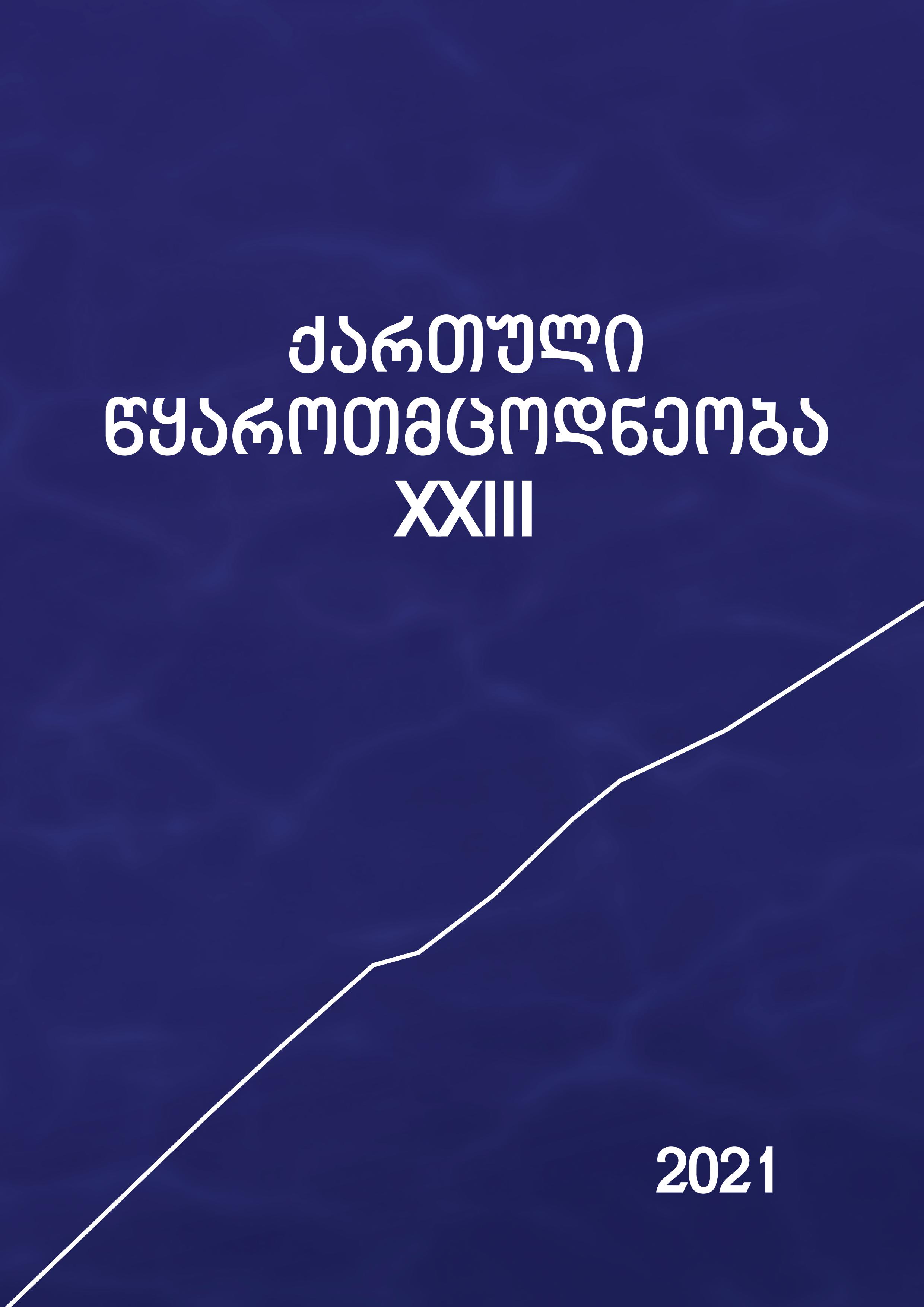AMIRAN AND TARIEL (On the Issue of Interrelations Between “Amiraniani” and “Knight in the Panther’s Skin”)
Keywords:
Amiran and TarielAbstract
In the article we discuss interrelations between images of the main characters of Amiraniani (Georgian folk epos) and Shota Rustaveli’s Knight in the Panther’s Skin.
Character of Amiraniani, named Amiran, fights against the evil forces, defeats all of them, takes his sweetheart living in the heavenly castle and brings her to his home; finally, because of his power, he loses his mind and becomes arrogant. His arrogance was so great that he dares to fight with the God and for this he was punished – God chained him to Caucasus Mountains.
We regard that the myth about Amiran describes the fight between the Caucasian temples; in our opinion, Amiran was the cult of pagan temple where the main things were only love and only faith, rather than reasonable and logical thinking. We regard that, supposedly, in such temple the priority was given to actually blind faith to the oracles and the philosophy based on logic, close to the Hellenic one, was less appreciated. In our opinion, to this cult center, there should be opposed the temple where there was regarded that lack of logic and reason finally results in arrogance and leads individual to the way of ruin; we regard that this, second temple won the battle of the worldviews and that at one of the stages of the history, in some Caucasian region, the winner was such temple, where the basis of worldview was, logic-based philosophy, together with the faith.
Supposedly, Amiran, fighting with the evil forces was very popular from the early period. Analysis of the legends shows that in the early epoch Amiran’s story had a happy end; while when the temple that relied on logical thinking and philosophy gained the dominating position, the continuations were added to these legends and the story would tell that arrogance brought Amiran to sad end; that he fought with the God and because of this he was punished and chained to the cliff. It seems, such end reflected also the history of the defeat temple that was based on the faith only and underlined the fact that lack of reason and logic results in punishment and no matter how great is individual’s love, without common sense, he/she cannot be happy. Amiran has taken his sweetheart but he could not live with her in happiness and was punished for his arrogance.
The temple dominating in Caucasus, with the worldview based on logic, together with the faith, supposedly had close relationships with the Greek religious centers; in our opinion, it is assumable that the myth about the hero chained by the God to Caucasus Mountains for disobedience has achieved Greek religious centers of from Caucasian temples that had close relationships with the Greece and from there moved to the Greek literature and thus there was created the myth about Prometheus chained by Zeus to Caucasian Mountain.
Tariel, the main character of the Knight in the Panther’s Skin, has great love to beautiful Nestan, who was spirited away by the evil forces and locked in the castle but due to parting from his sweetheart, Tariel lacked common sense and temperance and he came to the verge of death. He was able to free Nestan only after Avtandil, known for his wisdom became his friend and supporter. In our opinion, Rustaveli responds to Amirainiani; in his poem he showed the other way of the main character of the epos, showing that an individual full of love, can achieve great happiness, if, together with love, has some wisdom as well.
Thus, we express our hypothesis that the myth about Prometheus chained to Caucasus Range has originated in Caucasus and reflected the confrontation of the worldviews that has taken place in Caucasus. In our opinion, Amiraniani has its influence on the Knight in the Panther’s Skin.
The article provides discussion of the genesis of the characters of Amiraniani and the Knight in the Panther’s Skin.
Downloads
Published
Issue
Section
Categories
License

This work is licensed under a Creative Commons Attribution-NonCommercial 4.0 International License.

